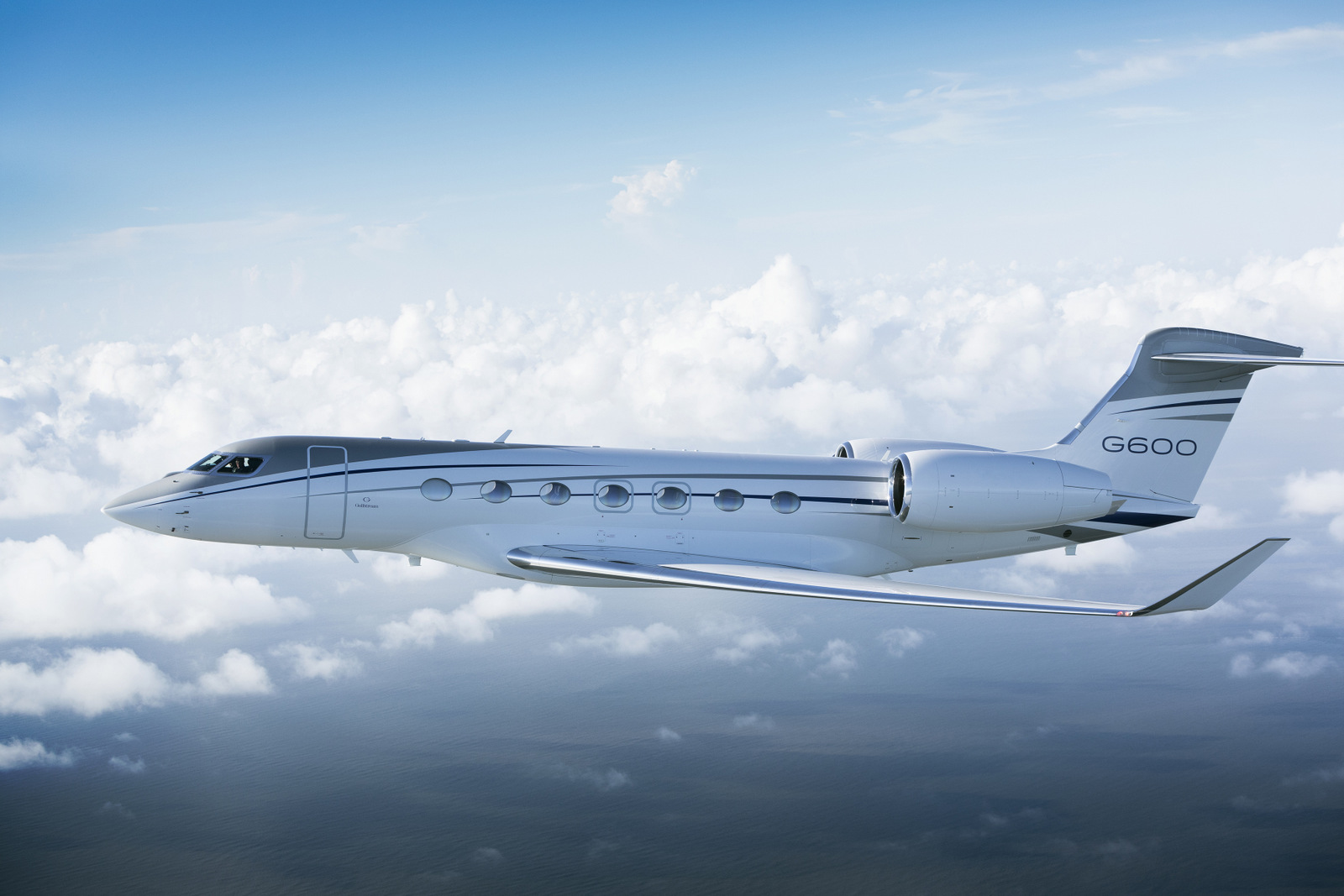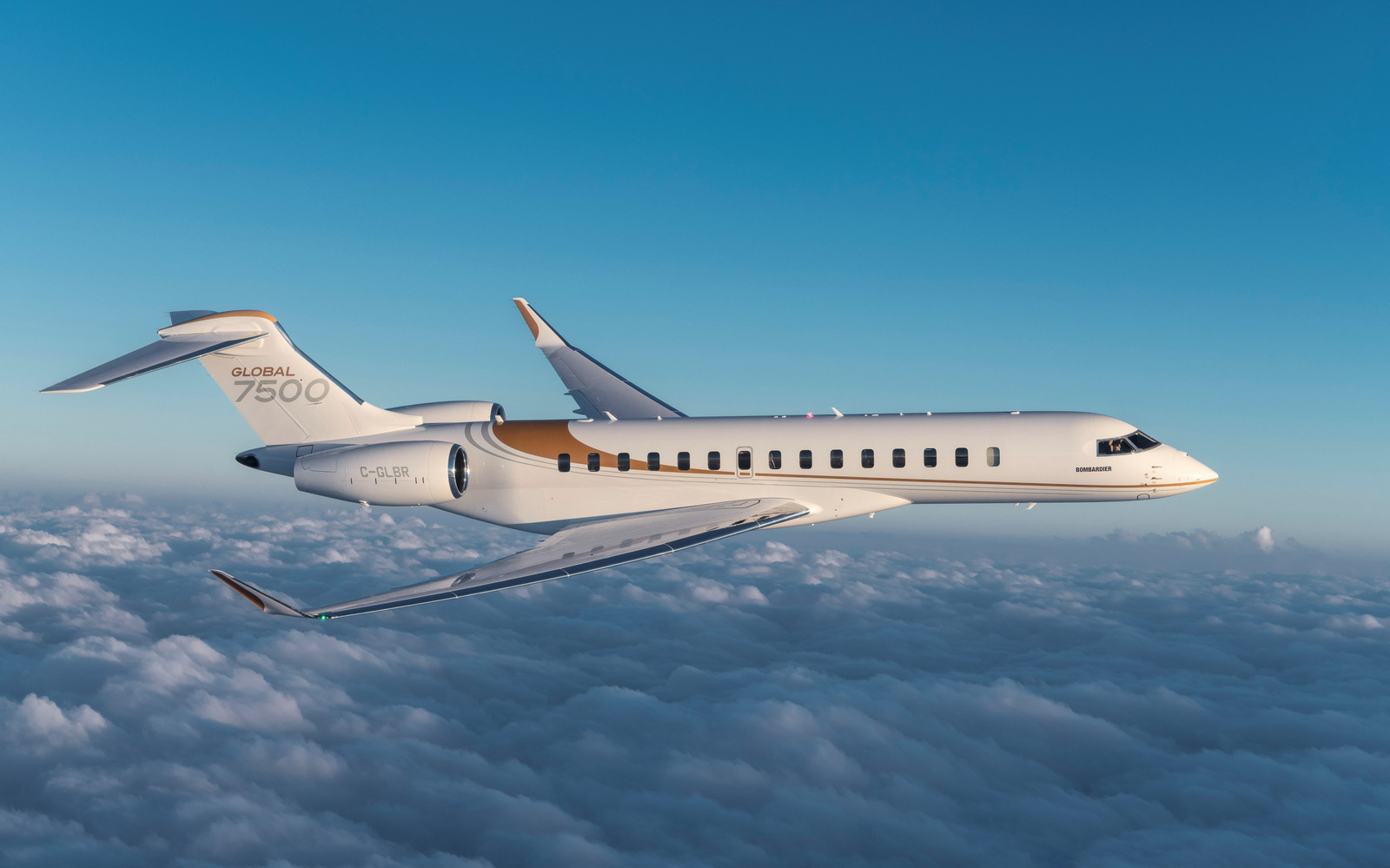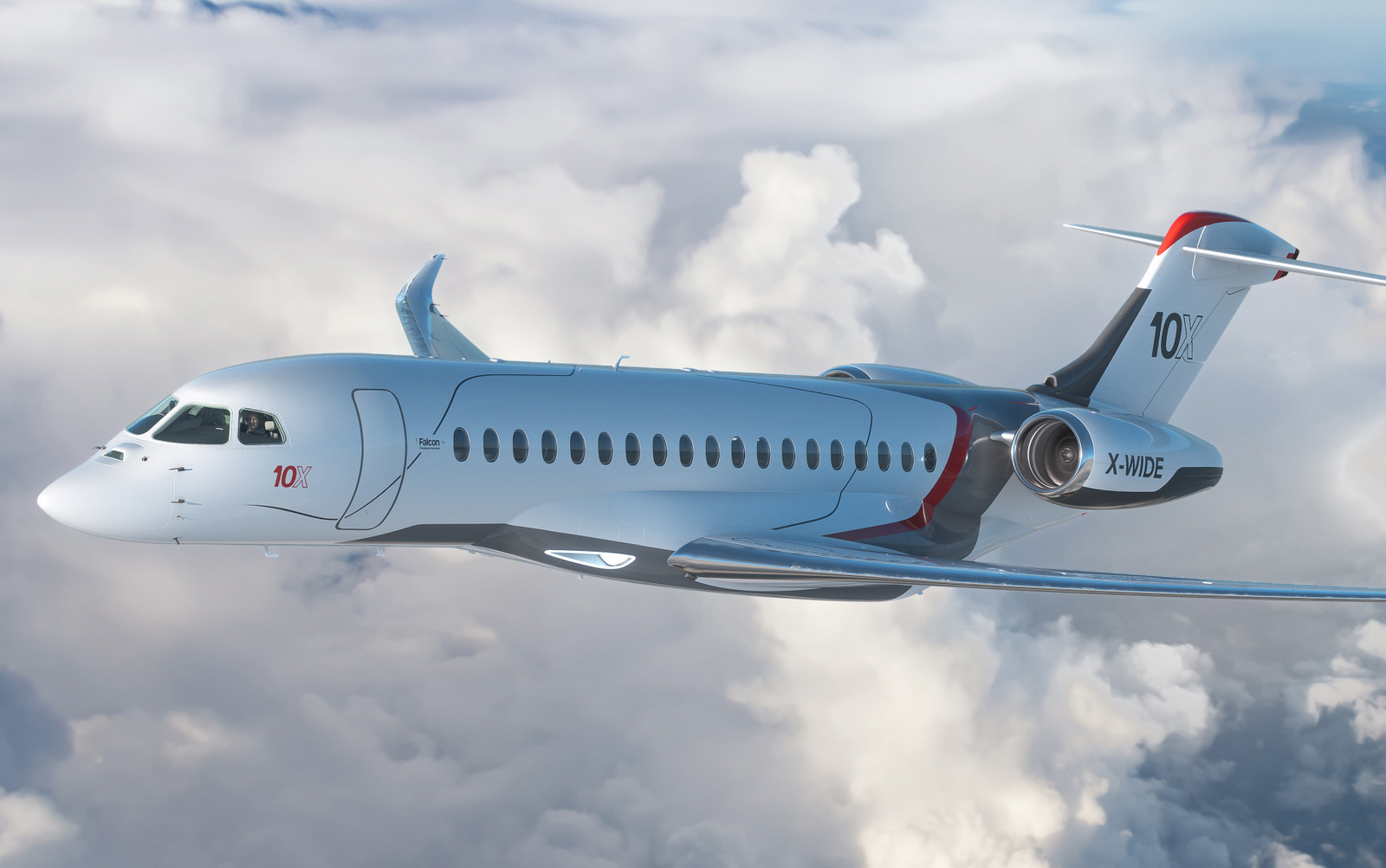Written for Skies Magazine – August/September 2021
In the stratospheric reaches of the corporate aircraft sector, there are three manufacturers whose large-cabin jets are the pinnacle of luxury, innovation, and technology – Bombardier, Dassault, and Gulfstream.
Each company has a pedigree that stretches back for decades; the all-new turboprop Gulfstream 1 flew in the late 1950s, as other purpose-built corporate aircraft began to appear. The G1 was soon followed in the mid-1960s by the iconic Gulfstream II twin-jet, the pathfinder of today’s planes.
The 10-passenger Dassault Mystère/Falcon 20 had its first flight almost 60 years ago, in 1963, premiering the family of jets renowned by pilots for fighter-like handling, and for pampering its passengers.
Fifteen years later, inspired by a concept from the legendary Bill Lear, the Canadair Challenger took to the skies over Montreal. With Bombardier taking control of the Canadian company in the mid-1980s, the Challenger became the forerunner of the airframer’s line of corporate aircraft and its sector-defining regional jets.
From launch, these class-leading aircraft have evolved to include capabilities, efficiencies, and features that would have seemed like science-fiction to the aviation professionals of the day.
Now, as the resilience of corporate aviation has come into focus due to Covid-19, the three manufacturers are charting their course through the next phase of growth while reflecting on the impact of the worldwide pandemic.
A Global Challenger
“The pandemic has had an important impact on business aviation – we’ve seen growing interest in private aviation and the enhanced safety it provides,” said Anna Cristofaro, Bombardier manager of communications and public relations, in an interview with Skies.
“Business jet utilizations rates are well above commercial air travel rates, and they have been throughout the pandemic,” she added.
While the airline sector was being pummeled by Covid-based restrictions, well-heeled passengers turned to private aircraft. Their experience with the benefits of corporate aviation have led some of them to become new entrants in aircraft ownership.
“First-time business jet buyers made up a growing proportion of our order book, increasing from 16 percent in 2019 to 24 percent in 2020,” said Cristofaro.
Recognizing the pandemic-driven focus on a safe and healthy cabin environment, Bombardier’s Global jets can be equipped with the Pũr Air system, for an advanced standard of cabin air circulation and purification.
All the air in the cabin can be replaced in as little as 90 seconds, running through HEPA filters that block 99.99 percent of allergens, bacteria, and viruses.
Bombardier’s updates to the Global series have been rolling out like clockwork, starting with the flagship Global 7500’s entry into service in late 2018.
The 7500’s siblings — the Global 6500 and 5500 — followed into service in late 2019 and mid-2020, respectively.
More than 50 of the GE Passport-powered, ultra-long-range 7500s have been delivered, and the components for the 100th aircraft are already in the manufacturing pipeline.
“We also recently delivered the first Global 7500 aircraft in Indonesia, and just a few days later on June 30, 2021, announced the delivery of two Global 7500 aircraft to two separate Canadian customers — a milestone that Bombardier proudly celebrated,” said Cristofaro.
The three models that make up the Global line are currently manufactured at Bombardier’s storied Toronto-Downsview final assembly site, which has an aviation heritage stretching back almost a century to the early days of de Havilland Aircraft of Canada.
With plans for redevelopment of the Downsview Airport lands underway, Bombardier’s Global assembly line will be relocated to a new, 770,000-square-foot facility at the north end of Toronto’s Pearson International Airport that will cover more than 40 acres. According to Cristofaro, the “project is proceeding as planned,” and scheduled for completion in 2023.
The 40-year legacy of the original Canadair Challenger can be seen in its latest descendant, the Challenger 350 – but this is ***not*** your father’s Challenger.
“For the last seven years, it’s been the most delivered business aircraft in the Medium category, and it’s hugely popular among fleet and charter operators,” said Cristofaro.
“Bombardier has introduced an array of enhancements to the Challenger 350, including cabin sound-proofing, refreshed cockpit aesthetics, HUD with Enhanced Vision, Ka-band connectivity, and steep approach capability.”
With the divestiture of the company’s commercial aircraft and ground transportation divisions now complete, Bombardier’s sole focus is to see newly-built Challengers and Global jets in the hangars of its customers.
And for more than 35 years, Bombardier has assisted its clients who are upgrading to a new plane, with the sale of their older aircraft. Recognizing the burgeoning strength of the used market, the company recently launched a Certified Pre-Owned aircraft program.
“Each Bombardier business jet sold through the Certified Pre-Owned aircraft program is acquired on trade or purchased on the open market; [it is then] upgraded and refurbished to meet the program’s quality standards at one of Bombardier’s world-class service centers,” explained Cristofaro.
Overall, she sees optimistic days ahead for Bombardier.
“We’re very confident on the outlook of the business aviation market and we see positive trends — high utilization, the increase of global wealth, and an untapped demand for business aviation.”

Gulfstream’s G600 has been in service since August 2019 and has a 6,600 nm range at M0.90.
Photo: Gulfstream
G is for Gulfstream
“Gulfstream is seeing strong demand for our aircraft across the product line, and the fleet is growing around the world,” said Scott Neal, Gulfstream’s senior vice president of worldwide sales.
“For our in-production aircraft, the in-service fleet includes more than 200 Gulfstream G280s, more than 100 G500s and G600s combined, and more than 400 G650 and G650ER aircraft combined.”
And there are still thousands of Gulfstream’s legacy aircraft flying, including the record-setting G550, which recently ended production after more than 600 aircraft were manufactured.
Supporting this huge fleet changed due to the pandemic, with Gulfstream facilities following CDC and WHO guidelines to ensure the health and safety of its clients and staff.
The manufacturer was “quite busy supporting customers during the Covid-19 outbreak,” said Neal. “We also saw many customers using that time to bring their aircraft into our service centers for scheduled inspections and planned maintenance.”
He explained that the company was also able to maintain the integrity of its production and manufacturing supply chain, and weathered the pandemic “without experiencing significant shortfalls.”
Gulfstream is echoing the industry trends, seeing an uptick in interest from first-time buyers along with corporate customers looking to expand their fleets.
“The Covid-19 crisis and its impact on travel really made the case for business aviation. Business jet operators and passengers have much more control over schedules and routes as well as health and safety when traveling on a private jet,” said Neal.
Moreover, flight testing on Gulfstream’s latest jet, the G700, has continued apace, with six test aircraft now in the certification program. The new flagship of the Gulfstream fleet will range out as far as 7,500 nautical miles, at Mach 0.90.
Sharing the advanced, touch screen-enabled Symmetry Flight Deck with the G500 and G600, the G700’s pilots will fly the high-speed jet with BAE Systems’ active control sidesticks.
Passengers will no doubt enjoy the luxury amenities in the G700’s large cabin, which can be configured with up to five living areas, seat up to 19, and sleep up to 13.
The G700’s interior will be an even more comfortable environment, thanks to the recent performance improvement in cabin altitude – while speeding along at FL410, the G700’s cabin will be at 2,916 feet.
Even though attention is often lavished on its large-cabin jets, there’s a clear role for Gulfstream’s super-midsize G280, explained Neal.
“We also see continued interest in the G280 for customers who need a nimble aircraft for shorter trips — one that can access hard-to-reach airports and does so with the performance features of a large-cabin aircraft.”
With a portfolio that includes the G280 along with the ultra-long-range, large cabin G500, G600, G650, G650ER, and upcoming G700, the OEM is well-positioned to meet its customers’ needs, according to Neal.
“Gulfstream is very optimistic about the market.”
Virtually a New Falcon
The idea of announcing a new, advanced, large-cabin jet during a pandemic might seem to be an impossible challenge, but on May 6, Dassault proved itself up to the task.
Sitting in a hangar at Paris-Le Bourget Airport with virtual lights gleaming off its virtual fuselage, the first images of the computer-generated, augmented-reality Falcon 10X were streamed worldwide during a slick, 30-minute presentation.
Almost indistinguishable from a real aircraft, viewers were introduced to Dassault’s new flagship, the Falcon 10X, inside and out.
Slated for initial deliveries at the end of 2025, the 10X will have a 7,500-nautical-mile range, and will be equipped for passengers — and pilots — to comfortably fly missions of more than 15 hours.
With a cabin cross-section “larger than some regional jets,” the 10X’s cabin can be customized with four equal-sized sections that will be flooded with light from 38 extra-large windows.
On the flight deck, technology proven in Dassault’s Rafale fighter will be integrated into the 10X’s advanced digital flight control system, including a single-lever smart throttle; Falcon Eye combined vision system and dual HUDs that will serve as the primary flight displays; and a single-button enabled, unusual-attitude automatic recovery system.
One perhaps controversial 10X flight deck feature is the proposed lie-flat pilot seats – not unlike the seating found in business class airliner cabins.
“The level of automation will allow us to have one pilot flying the aircraft while the other one is resting in the cockpit. The size of the cockpit has been designed to receive a full-flat seat that will offer better rest opportunities,” said Philippe Duchateau, chief test pilot and 10X project pilot, during the presentation.
Needless to say, the implementation of this feature will be subject to regulatory approval.
To meet the Falcon’s trademark high-speed cruise mixed with low-speed safety and performance, the 10X will be equipped a carbon-fibre wing and powered by new Rolls-Royce Pearl 10X engines – capable of delivering over 18,000 pounds of thrust.
This will be the first Falcon to have R-R powerplants, and Eric Trappier, chairman and CEO, is confident about the new partnership.
“We strongly believe that Rolls-Royce has the right competency, the right technology in order to design this engine to be fitted for us,” he said.
So far, 2021 has been a busy year for Dassault.
In addition to ongoing production of its lineup of Falcon 2000S, 2000LXS, 900LX, 7X and 8X jets, the first flight of the Falcon 6X was on March 10. This flight was dedicated to the memory of family icon Olivier Dassault, who died tragically just prior to the 6X’s inaugural flight.
A third 6X has recently joined the plane’s flight-test program, targetting certification in 2022.
Dassault’s sales performance in the first half of this year mirrors the strength and U.S. recovery in business aviation, with 25 new orders, as compared to only five orders in the first half of 2020.
While the company only delivered six new Falcons so far this year — compared to 16 in the same period last year — Dassault is maintaining 25 deliveries for 2021 in its financial guidance for the year.
Dassault Aviation has been a force in both military and civil aviation for decades, and CEO Trappier is confident about the future — and his latest flagship.
“I strongly believe that business aviation is a solution to support the economy, worldwide. We expect civil aviation to be a success in the future, and this is why we invest so much money in the 6X, and now with the 10X.
“It will put us at the top of business jets.”

